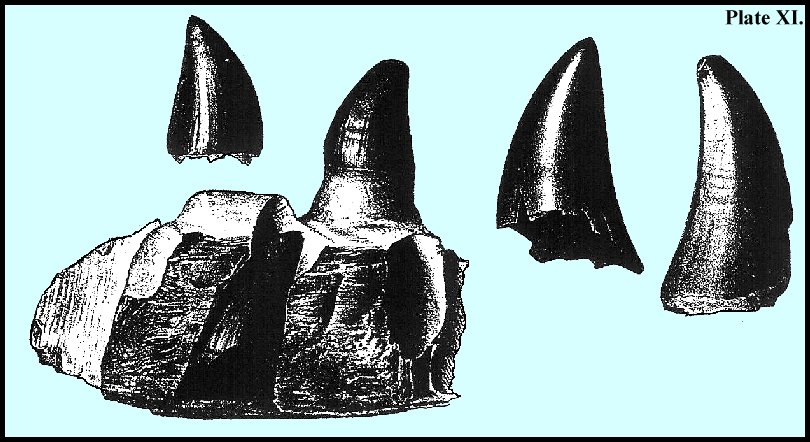176
Proceedings of the Academy of
________________________
September 1st,
1857
Vice-President Bridges
in the Chair.
Dr. Leidy
remarked that there appeared to exist a general misconception in regard to the dentition
of the Mosasaurus*. The animal is almost universally called an acrodont reptile, or
one in which the teeth are inserted upon, or are co-ossified with, the border of the jaws.
A number of specimens of teeth and fragments of jaws, in the museum of the Academy, prove
this appellation to be incorrect.
The teeth of Mosasaurus*
have a recurved pyramidal crown, and a more massive vertically oblong root, which is often
twice the length of the crown. The root is inserted for three-fourths of its extent into a
corresponding deep socket, with the sides of which it is co-ossified. The centre of the
teeth is occupied by a fusiform pulp cavity, communicating with one or more vascular
canals passing through the fang.
In the
reproduction of the teeth, it appears that new ones commence to be developed attached to
the gum, on the postero-internal side of the alveoli. As they proceed, they penetrate into
the latter, by exciting an absorption of the substance of the fang of the old teeth in a
direction obliquely outward and forward. The cavity of the new tooth increases in size at
the expense of the substance of the fang of the old one. The pulp cavity of the old tooth,
in consequence of the ossification of its pulp, appears to recede before the increasing
cavity of the new tooth. The latter cavity finally makes a communication with the former,
thought this appears not always to be the case; and subsequently the fang of the old tooth
becomes so completely excavated as to form a mere capsule, from which its crown is broken
away or shed, through comparatively little violence. In further progress of the newly
protruding tooth, the osseous capsule formed from the fang of the old tooth is gradually
obliterated, except for a portion which remains as a partition from the next alveolus.
[September,
*- mis-spelled as Mososaurus
in the original text ... corrected herein. |

